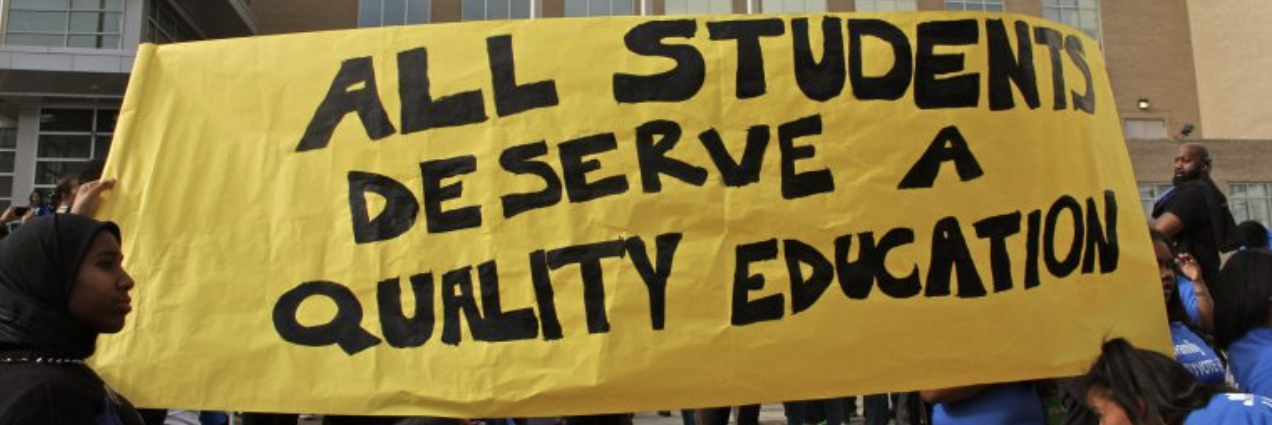With hopes of garnering “greater educational investments throughout [Philadelphia’s] more than 200 schools and improved educational outcomes for students and [reversing] enrollment declines,” the School District of Philadelphia felt that closing these thirty schools was the best decision at the time. Financial support for public school districts is steadily decreasing. Education districts are always closing schools and essentially abandoning students in hopes of saving costs: “Logistics and finances were at the heart of the closure campaign. As the city lost population and many students started to choose charter schools, district officials were left with a problem: too many buildings, too few students. District officials said they needed to “rightsize” to cut costs.” In practice, “rightsizing” looked like defunding education across the city: “In September 2012, the district’s Chief Recovery Officer, Thomas Knudsen, released a five-year financial plan that included a recommendation to close approximately 40 schools at an expected annual savings of $33 million.” By April of 2013, “24 schools were approved for closure by the School Reform Commission. These closures, along with grade reconfigurations and co-locations, [were] expected to eventually achieve $24.5 million in annual savings.”
Along with the school closures, the 2013 “school budget stripped Philly schools of all non-legally mandated personnel, resulting in zero secretaries, assistant principals, counselors, librarians, and classroom assistants. Also zeroed out were all sports, extracurricular and gifted programs, and book and supplies money. Summer negotiations over teachers’ contracts are underway, with the district demanding more than $131 million in givebacks and eliminating most teacher protection.”
Furthermore, Public school closures heightened charter proliferation campaigns. As the thirty public schools were closed, charter schools were opened. Specifically, in 2012, the Philadelphia School Reform Commission’s transformation blueprint proposed closing one-fourth of the district’s schools while dramatically expanding the number of students enrolled in charter schools. In the years leading up to the school closures, the school district reported that they had “lost 50,000 students to charter schools over ten years [, and] so many schools are only half full, and downsizing can save $28 million a year and make the remaining schools stronger.” Inadvertently, this push to open charter schools did not save the city money as they had initially hoped. If anything, the city had increased expenses to cover the overflow of students entering their new schools. In early February of 2014, the city faced an “extra $25 million in unbudgeted costs associated with increased enrollment in charter schools. Charters have enrolled 1,600 more students than allowed by their agreements with the district.”
At large, the United States education system has a history of closing schools in an attempt to “turn them around” or use that funding to strengthen others. In Philadelphia, school closures have pushed more students to learn under the confines of Philadelphia’s forthcoming neoliberalist approaches to education. The privatization of schools has not made a positive impact on the low-income and African American communities in Philadelphia. The school district of Philadelphia incorporated neoliberal school reform models into its education system through its implementation of “hyper accountability-” the micromanaging of educators- and “hyper standardization” practices. It was more cost-effective to incorporate neoliberalism approaches. As demonstrated in “They Schools: Culturally Relevant Pedagogy Under Siege,” the state took full governance over the education system and highered outside support to train their teachers and staff, which went “neoliberal educational context, [and further foregrounded] academic success while ignoring the development of students’ cultural competence and sociopolitical consciousness, has had a deleterious effect on vulnerable student populations, particularly Black youth.”
Moreover, the discussion around the expansion of charter schools rarely extended much beyond the goal of increasing standardized test scores, which only put more negative pressure on schools and their students. Standardization has played a significant role in school closures. One account from a former elementary school principal summarizes how schools sometimes operate solely based on standardized tests. The principal goes on to note that “in the elementary schools… performance on tests comprises 85 percent of the A–F grade. Schools are closed, and principals are removed based on the PR, and it therefore deeply influences what resources go to our children. Choking on these limited valuations of her worth, the whole child can hardly survive in such a system.” All in all, the school closures and charter school expansion represented significant changes to the complex environments of school districts and the communities in which they occurred.
